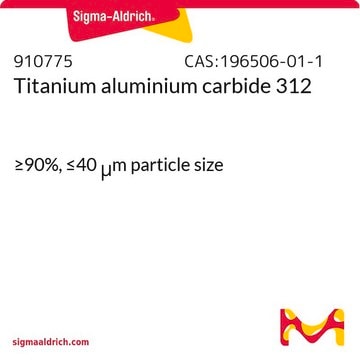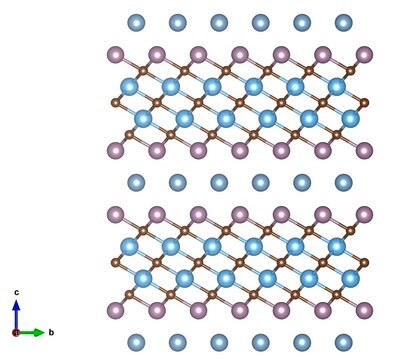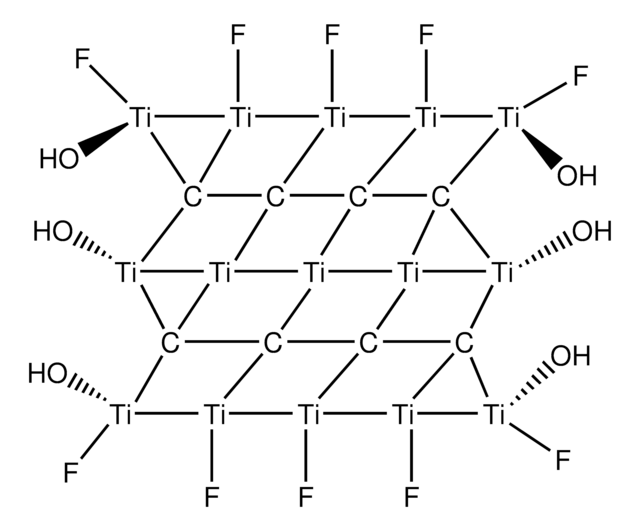910767
Titanium aluminium carbide 312
MAX Phase, ≥90%, ≤100 μm particle size
Synonym(s):
MAX Phase 312, Ti3AlC2
About This Item
Recommended Products
Assay
≥90%
form
powder
color
dark gray
particle size
≤100 μm
Looking for similar products? Visit Product Comparison Guide
Related Categories
Application
MAX phases are important precursors for synthesizing MXene, a highly conductive 2-dimentional nanomaterial. MXenes are produced by selective etching of the A element from the MAX phases. It combine the metallic conductivity of transition metal carbides with the hydrophilic nature of their hydroxyl or oxygen terminated surfaces. Ti3AlC2 MAX phase is one of the most used MAX phase for MXene (Ti3C2Tx).
Storage Class Code
13 - Non Combustible Solids
WGK
WGK 3
Certificates of Analysis (COA)
Search for Certificates of Analysis (COA) by entering the products Lot/Batch Number. Lot and Batch Numbers can be found on a product’s label following the words ‘Lot’ or ‘Batch’.
Already Own This Product?
Find documentation for the products that you have recently purchased in the Document Library.
Articles
Optimizing the synthesis of high-quality 2D MXene flakes for 3D ink printing is essential to such technological developments as printable and flexible electronics.
Discover how MXenes' superior conductivity, strength, and stability are revolutionizing energy. Explore their potential for next-gen batteries and hydrogen evolution.
Advanced technologies for energy conversion and storage aim to improve performance and reduce environmental impact.
Professor Gogotsi and Dr. Shuck introduce MXenes: a promising family of two-dimensional materials with a unique combination of high conductivity, hydrophilicity, and extensive tunability.
Our team of scientists has experience in all areas of research including Life Science, Material Science, Chemical Synthesis, Chromatography, Analytical and many others.
Contact Technical Service






